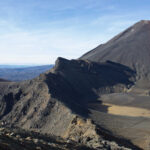From the historic vineyards of Europe to the innovative wineries of the New World, there’s something for every wine lover. Discover our wine-tasting travel guide for some of the world’s top wine regions and tips for planning your perfect wine-tasting trip.
What Are the Best Wine Regions to Visit Around the World?
New Zealand
Marlborough: Known for its crisp Sauvignon Blanc, Marlborough offers a breathtaking coastal setting for wine lovers.
France
Bordeaux: This region is world-renowned for its red wines from Merlot and Cabernet Sauvignon grapes. With over 7,000 wineries, you can visit elegant châteaux in areas like Saint-Émilion and Médoc.
Burgundy (Bourgogne): Burgundy is famous for its Pinot Noir and Chardonnay. The region’s wines showcase the unique character of its varied microclimates.
Champagne: Located northeast of Paris, Champagne is the birthplace of sparkling wine. Visitors can enjoy tasting different cuvées and exploring the underground wine cellars.
Italy
Tuscany: Known for its beautiful landscapes, Tuscany is home to Chianti and other Sangiovese-based wines. The region’s historic villas and vineyards make it a must-visit for wine lovers.
Piedmont: This region produces more DOCG wines than anywhere else in Italy, including Barolo and Barbaresco, made from the Nebbiolo grape.
United States
Napa Valley: Located in California, Napa Valley is known for producing world-class wines, particularly Cabernet Sauvignon. With over 400 wineries, it’s a favourite destination for wine tourists.
Willamette Valley: This cool climate region in Oregon is famous for its Pinot Noir. The wineries here often focus on sustainable practices.
Spain
Rioja: Spain’s most famous wine region produces rich red wines from Tempranillo grapes, which are known for their complex ageing process.
Portugal
Douro Valley: As the birthplace of Port wine, this region features stunning terraced vineyards along the Douro River.
Argentina
Mendoza: Famous for its Malbec, Mendoza produces 70% of Argentina’s wine. The dramatic Andes mountains surround the region’s high-altitude vineyards.
How Should Travelers Prepare for a Wine Tasting Trip?
Planning a wine-tasting trip requires some preparation to make the most of your visit:
Research and Reserve: Many wineries require reservations, especially in popular regions. Plan your itinerary and book tastings in advance.
Plan Transportation: Consider hiring a driver or joining a tour, especially in regions like Napa or Bordeaux, where wineries are spread out and tastings involve alcohol.
Pace Yourself: Don’t try to visit too many wineries in one day. Drink water between tastings, and don’t hesitate to skip a sip to avoid palate fatigue.
Learn Wine Tasting Basics: Knowing basic wine-tasting etiquette and terminology can enhance your experience. Take a notebook to jot down your thoughts on different wines.
What are the Key Differences Between Old World and New World Wine Regions?
Understanding the differences between Old World and New World wine regions can enrich your wine-tasting experience.
Old World
These regions, such as France, Italy, and Spain, have centuries-old winemaking traditions. Their wines are typically more restrained, focusing on terroir—the specific characteristics of the vineyard’s soil, climate, and geography. They often have stricter regulations on winemaking methods.
New World
New World wine regions, like California, Argentina, and New Zealand, are known for experimenting with winemaking. Their wines are often bolder, more fruit-forward, and less tied to tradition. The warmer climates usually result in riper, fuller-bodied wines.
Cheers!
Exploring wine regions worldwide is a fantastic way to immerse yourself in different cultures and enjoy incredible wines. Whether you prefer Old World wines’ elegance or the New World’s bold flavours, each region offers unique experiences. So, prepare to sip, savour, and explore these beautiful wine regions on your next wine-tasting adventures.


